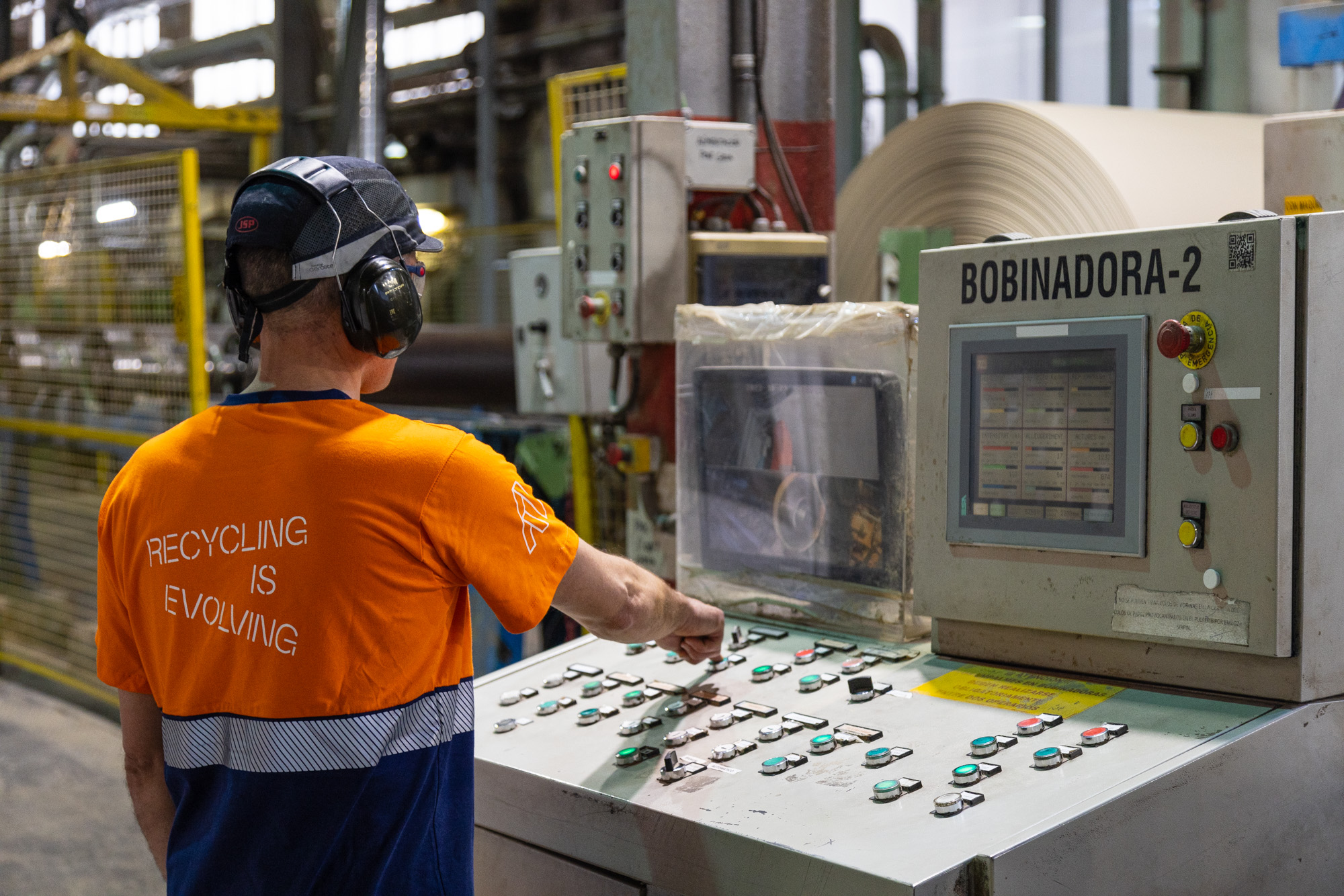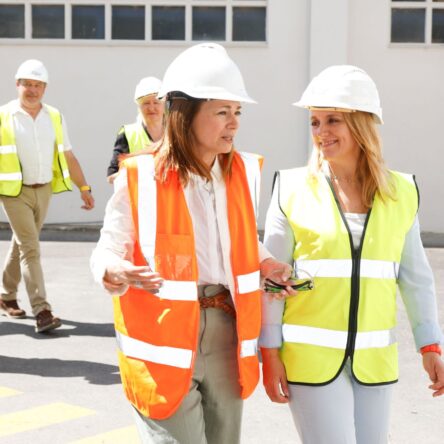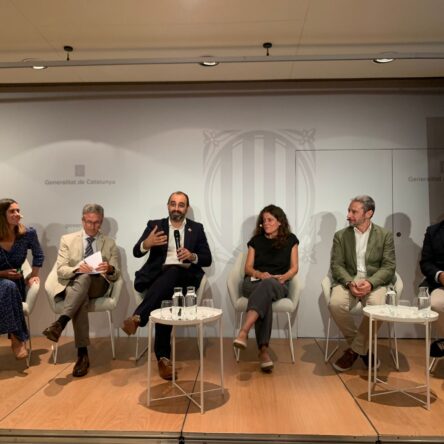
The workplace safety at Alier: A holistic approach
Managing the safety and health of workers in an industrial company with more than 260 employees engaged in various individual activities can pose a significant challenge. However, at ALIER, we have the best professionals to tackle it. Vanessa Jarne, with over 20 years of experience in Occupational Health and Safety in Spain, and serving as the Head of Risk Prevention at Alier, is here to explain it to you.
– VANESSA, WHAT ARE THE BASIC SAFETY PRINCIPLES THAT GUIDE ALIER’S OPERATIONS?
At Alier, the safety and well-being of our team members are paramount. To ensure a secure work environment, we adhere to six fundamental safety principles. Firstly, we focus on Identifying and Assessing Risks to prevent accidents, conducting comprehensive evaluations covering physical, chemical, biological, ergonomic, and psychosocial factors. Secondly, we implement control measures, prioritizing collective protection and providing appropriate personal protective equipment. Moreover, we prioritize employee training and information dissemination, conduct regular health surveillance, and uphold legal compliance through routine audits. Finally, we foster a safety culture where every employee takes responsibility for their own safety and that of their colleagues.
-HOW DO YOU MANAGE SAFETY AND HEALTH AT ALIER, WITH OVER 260 EMPLOYEES AND VARIOUS ACTIVITITES?
Our approach to safety and health management is grounded in the integration of prevention into every department at Alier, fostering seamless interaction across all areas. We prioritize an empathetic and assertive perspective, promoting social and interpersonal skills. Effective communication is essential for fostering closeness and encouraging cooperation among all team members. We implement a prevention management system that ensures safety through meticulous planning, supported by an updated Occupational Risk Prevention Plan tailored to the specific needs of each activity. Organization, training, health surveillance, and legal compliance are key pillars in this approach. Furthermore, at Alier, we nurture a culture of safety and health through open communication that encourages the free expression of risks and preventive measures, with the participation of all employees.
-IN ADDITION TO PRIORITIZING PHYSICAL SAFETY, WHAT INITIATIVES DOES ALIER IMPLEMENT TO PROMOTE WELL-BEING AND IMPROVE THE LIFESTYLE OF ITS TEAM?
At Alier, we strive to positively and proactively promote the health and well-being of our employees, with the aim of enhancing their quality of life, and we do so from a holistic approach, considering both physical and mental health. To achieve this, we encourage healthy activities among our team and their families. We have Wellness programs that include partnerships with gyms, dentists, physiotherapy centers, and opticians. Additionally, we have established the Alier Club, which encourages participation in sports such as running, paddle tennis tournaments, and soccer, thus incentivizing physical activity. As part of our initiatives, we have organized mindfulness sessions, back care workshops, and talks on healthy habits and musculoskeletal disorders in commemoration of World Day for Safety and Health at Work. Furthermore, we value the balance between work and personal life, so we offer flexible schedules and remote work options to accommodate the individual needs of our employees.
-WHAT MEASURES ARE TAKEN AT ALIER TO PROMOTE THE PERSONAL AND PROFESSIONAL DEVELOPMENT OF EMPLOYEES?
At Alier, we prioritize the personal and professional development of our employees through specific programs and training opportunities. We are committed to fostering comprehensive growth, encouraging our workers to acquire new skills and explore their personal interests. Additionally, we constantly review our benefits to ensure they are competitive and meet the needs of our team. These include options such as health insurance, parental leave, and flexible vacation days. In summary, at Alier, we strive for the holistic well-being of our employees, creating a healthy and positive environment. In fact, our healthy company model contributes to greater engagement, improved productivity, reduced conflicts, stress reduction, and decreased absenteeism. In the results, we realize that our people-first approach is key to our growth.
-TO CONCLUDE, WHAT IS YOUR PERCEPTION OF RISK PREVENTION IN SPAIN, AND DO YOU HAVE ANY RECOMMENDATIONS FOR IMPROVEMENT?
In Spain, if we examine the causes that predominantly lead to accidents, we can see that they are often due to haste, overconfidence, and lack of adherence to written procedures or failure to follow them. Post-pandemic, BANI environments (Brittle, Anxious, Non-linear, and Incomprehensible) emerged to define the chaos in which we are immersed. The BANI environment is designed to address situations that are not only difficult to predict and understand but are chaotic, completely unpredictable, and incomprehensible. As the philosopher Heraclitus said, “everything flows, everything changes; nothing remains.”
This difficulty in predicting and preventing impacts workplace safety and health: companies must adapt to this new chaotic situation and strive to create favorable conditions for employees to carry out their work activities as safely as possible. However, this new way of viewing the world is a reality that resists efforts to understand what is happening. The new era demands staying updated and preparing for change by creating resilient and innovative solutions.
In general, it could be argued that to address the BANI environment, it is necessary to work on “soft skills.” Living in a time of constant chaos necessitates creating future-proof businesses, finding disruption, and continuously innovating to reduce the effects of the context. We cannot know everything, which is why it is essential to develop skills that allow us to organize data supported by innovative tools. Companies should strive to gather maximum information about their environment continuously in order to anticipate changes and foresee risks.
A closer environment, where people are at the center of the organization, is crucial for tackling BANI environments. Therefore, it is necessary to focus on communication, consultation, dialogue, and participation.
This will allow us to see different scenarios with more perspective and clarity and, based on this, carry out precise analyses that ensure agility in implementing changes. In conclusion, although significant progress has been made, there is always room for improvement in workplace risk prevention in Spain. Collaboration, continuous training, and constant adaptation are key to continuing to progress towards safer and healthier work environments. Investing in the use of artificial intelligence and Big Data is, I believe, a winning bet for improving workplace risk prevention.





